Author: Antony Ingram
Photography: Antony Ingram
It’s too soon to say whether the Renault 5 E-Tech launched in 2024 will become the decades-long smash hits that the MINI brand and the Fiat 500 have been. As an electric car with the unavoidably higher price that confers (the MINI One started at £10,300 in 2001, £19k inflation-adjusted, the Fiat 500 at £8100 in 2008, about £13k today), it won’t be as immediately accessible to as many people. But early signs are good, with positive reviews – not least from us – and strong sales suggesting Renault might have figured out how to make a competitive, genuinely likeable EV that doesn’t weigh two tonnes or cost fifty grand.
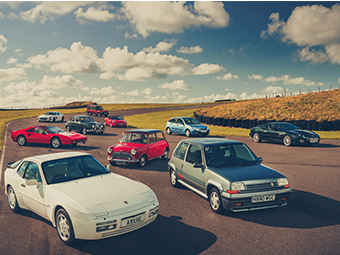
Renault now has two more opportunities to replicate this early success. One is the revival of the Renault Twingo, due in 2026 with styling heavily inspired by the 1990s original designed by Patrick le Quement. The other is with this, the new Renault 4 E-Tech, plucking another name and shape from the past and bringing it bang up to date.
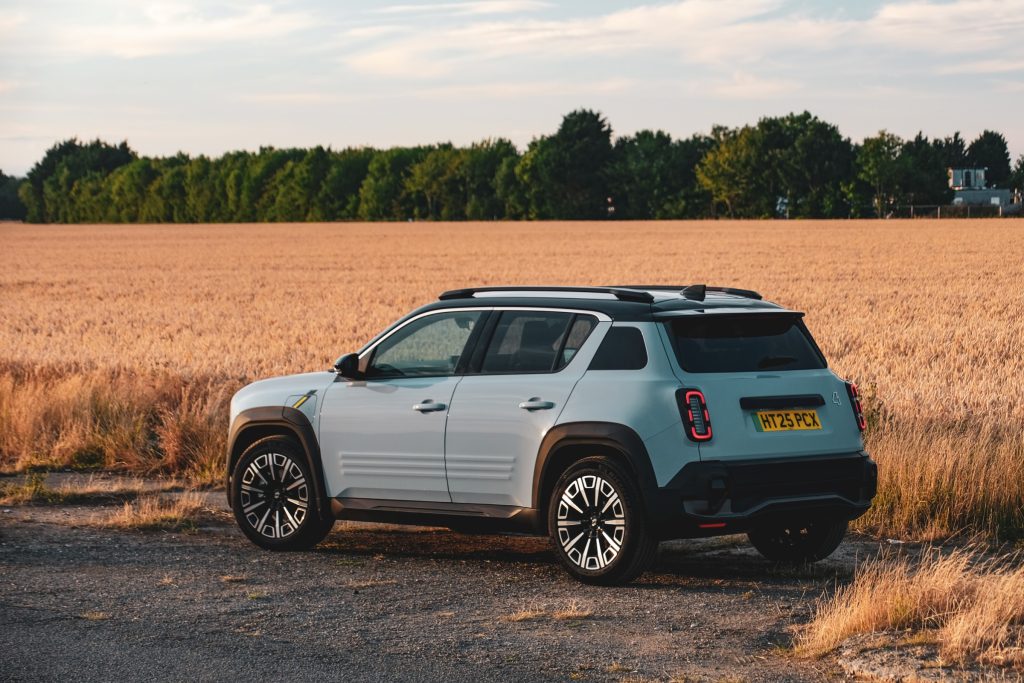
Is this automotive necromancy all a little cynical? Perhaps, but various retro revivals over the years show it clearly works, even among customers who have very little connection to the original cars. There’s a message to heed about not all cars needing to be scowling, aggressive-looking battle tanks in there somewhere.
If you’re familiar with the original 4, and especially the post-1974 models with their black plastic grilles, then the new model will be instantly recognisable. Like the new 5, the 4 is a thoroughly modern car in execution, and doesn’t scream ‘retro’ if you’re unaware of the subject matter, but still faithfully carries over many of the original’s styling cues.
On the briefest of glances, the rectangular grille with its round headlights, the distinctive body-side ridges, the raked C-pillar and small rear quarter windows, and the small, vertical tail-lights are all notable nods. As is at least some of the colour palette: our test car’s Cumulus Blue, plus Hautes-de-France Green and Carmin Red are all similar hues to ones you’d find on original Quatrelles over the years.
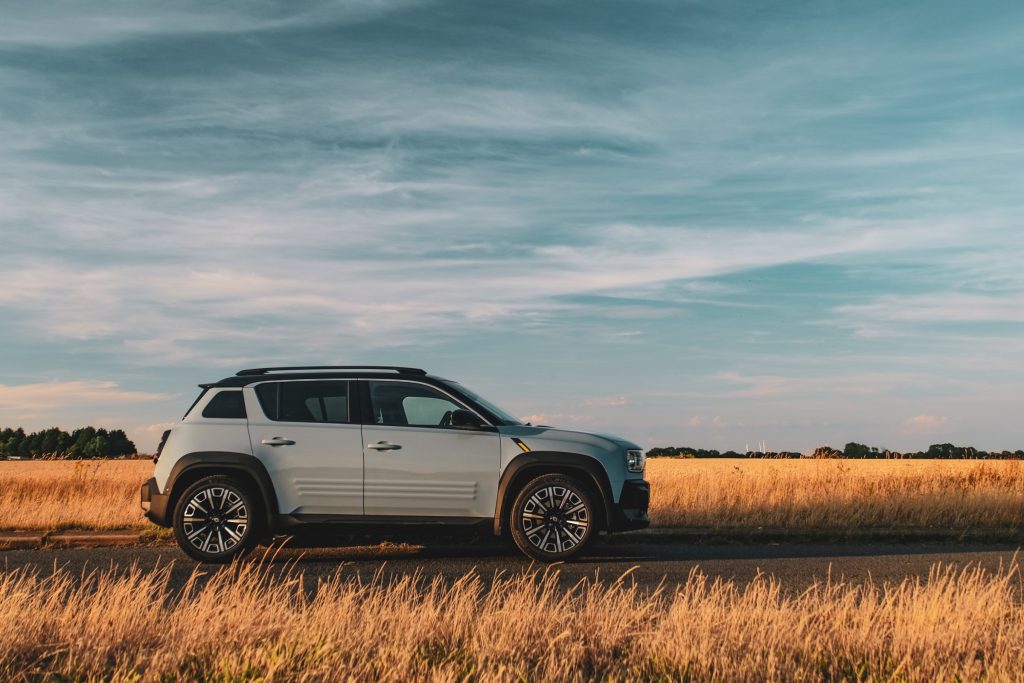
With the 4 pitched above the 5, Renault has also veered ever so slightly down the crossover route, giving it a taller ride height and some plastic body cladding, though it’s a credit to the shape that this treatment doesn’t stand out as being unfaithful to the original. As with the 5, Renault’s done great work with the detailing too, from subtle Tricolore motifs around the car, to the light-up Renault emblem, and practical touches like bumper inserts that both reference classic car over-riders, and are positioned at the car’s extremities in such a way they might actually be useful.
Sadly the visual inspiration seems to run out inside, as the cabin is all but identical to the Renault 5. That’s not a bad thing from a purely objective standpoint as the 5’s interior looks and feels good and works very well indeed, but given the classics both had quite different cabin layouts, and the new 5 more closely resembles its historical forebear, it’s a shame Renault didn’t attempt a new take on the classic 4’s more back-to-basics layout.
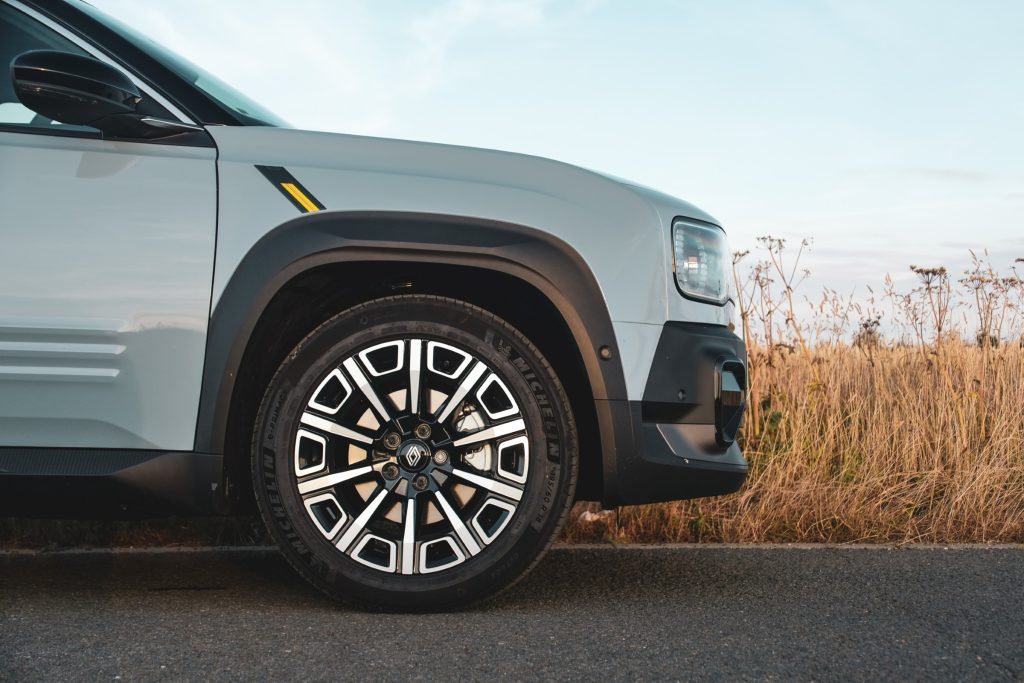
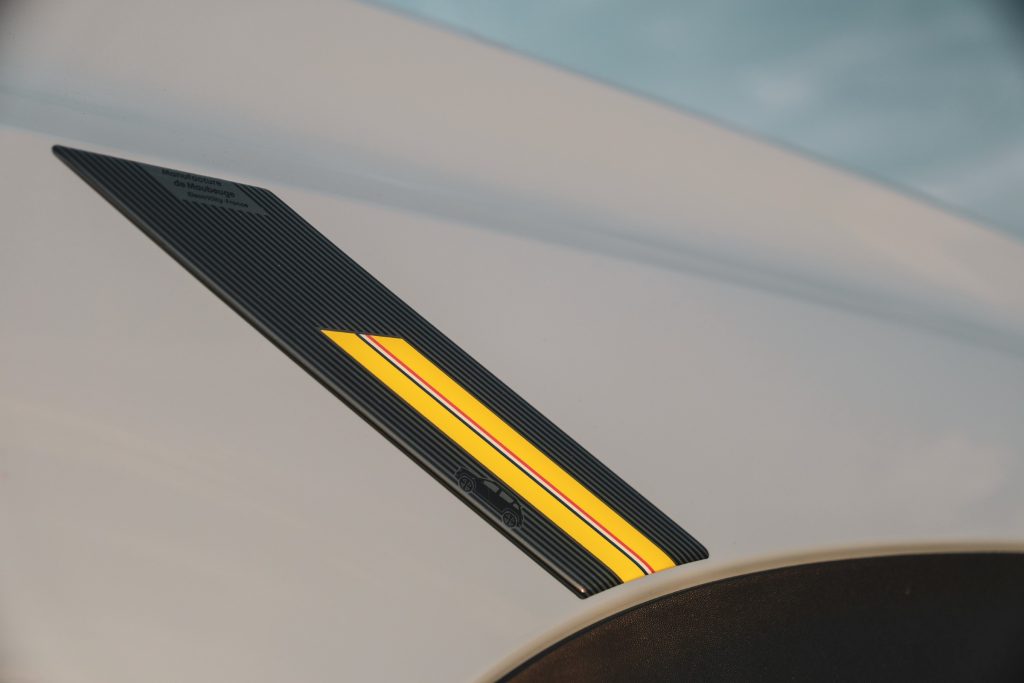
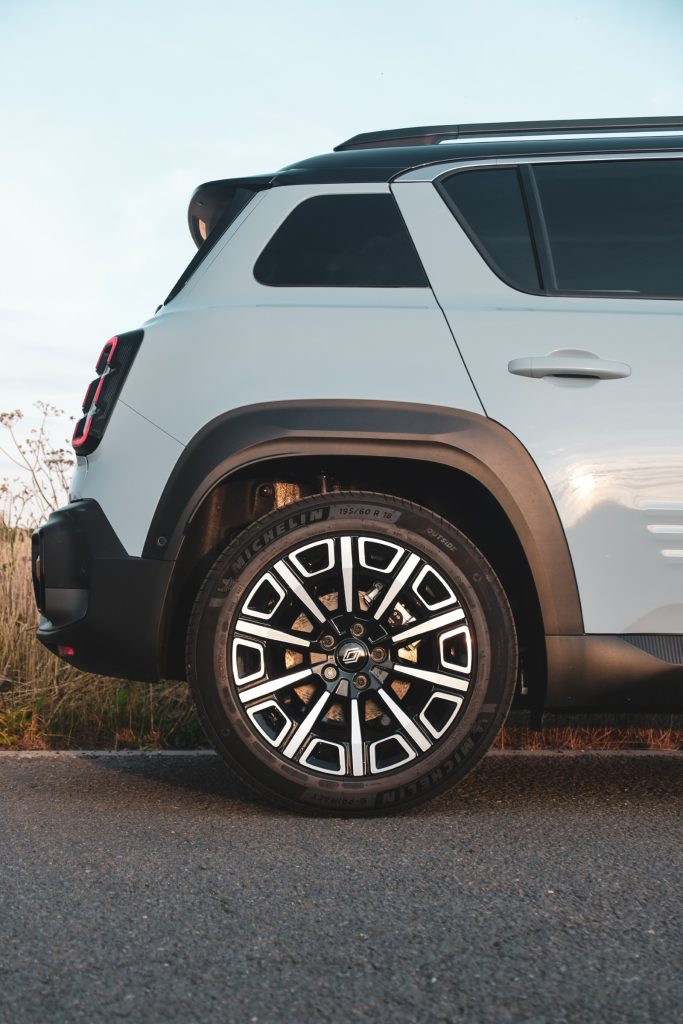
There are some new colours and textures at least, and where the 4 immediately scores, in being a larger car, is that rear seat room is notably improved, and its boot is nearly 100 litres larger too, at 420 litres compared to 326 litres. At the same time, this is no gargantuan crossover: at 4140mm long, it’s only 90mm longer than a Renault Clio. Like the 5, it’s light by EV standards too, at 1462kg with the sole battery option, 90kg heavier than the basic 5 with the smaller battery and only about 12kg heavier than a 5 with the same pack.
Continental 4s do offer a smaller battery but all UK models come with the same 52kWh pack and 148bhp electric motor as the higher-spec 5s. This also means they get the longer range as standard, with Renault quoting 247 miles, only eight miles less than the smaller Renault 5. Performance is only a nip behind too, at 8.2 seconds to 62mph, rather than eight flat.
UK specification is split into Evolution, Techno, and Iconic trim lines, with prices of £26,995, £28,995 and £30,995 respectively. Again, this is similar to the smaller car (which starts at £23k, but for the larger battery 52kWh version starts at an identical £26,995 at its cheapest) and undercuts most rivals – you’ll pay a minimum of £30k for a Ford Puma Gen-E or Jeep Avenger Electric, and nearly £34k for an Alfa Romeo Junior Elettrica.
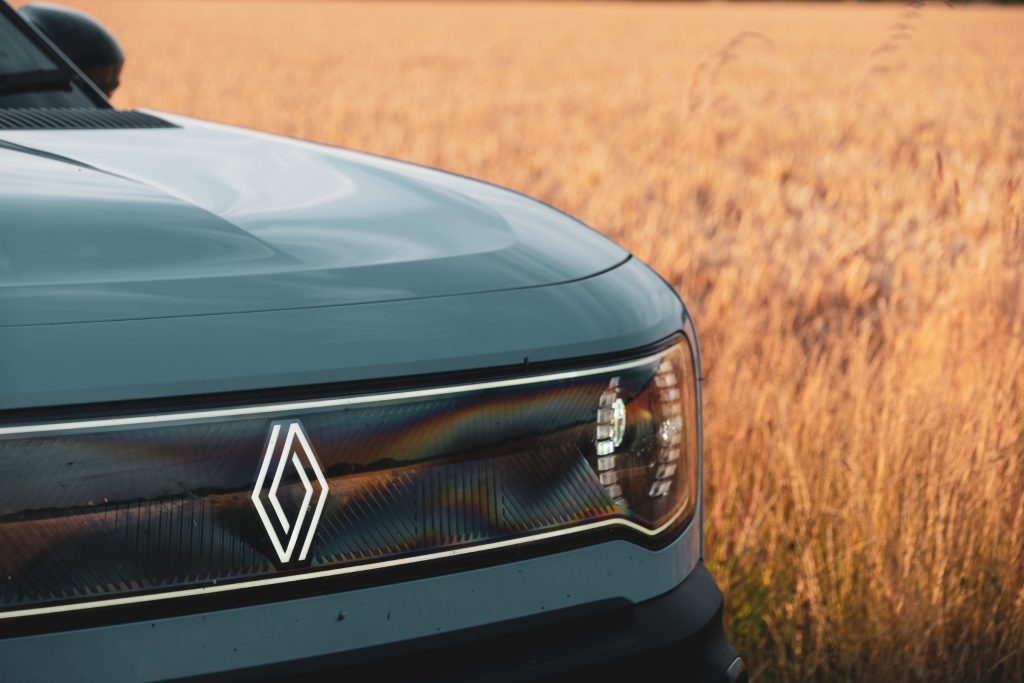
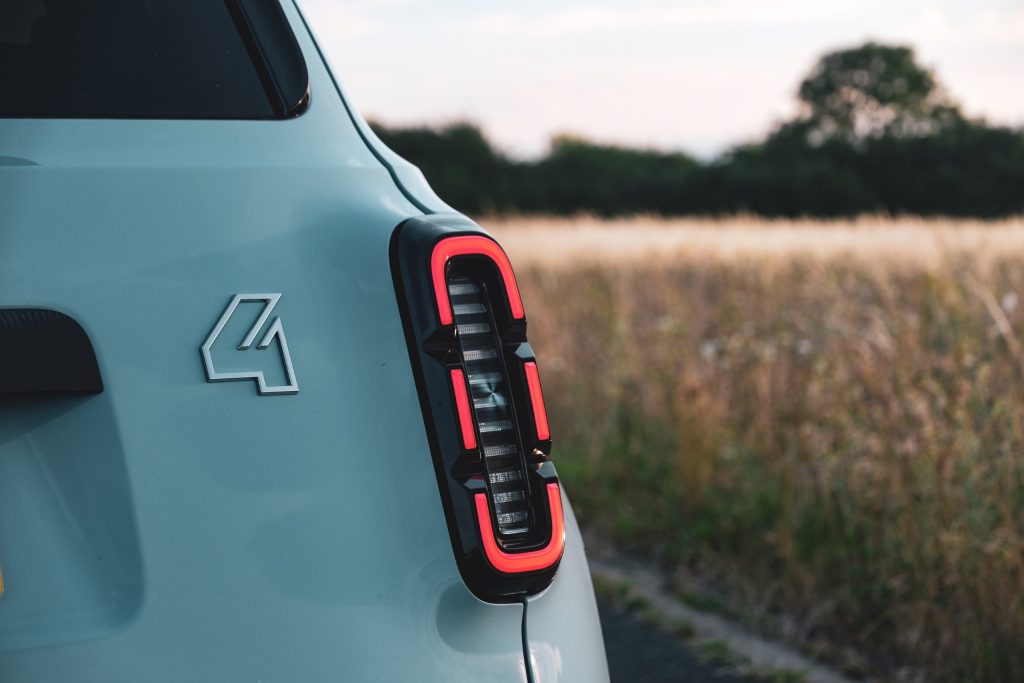
The 4 definitely has a feelgood factor when you approach and then step inside, in the same way those MINIs, 500s, and indeed the 5 did. Good design just makes you cheerful, doesn’t it? While similarly shaped to those in the 5, the seats feel a touch softer, and you sit a little higher too in the crossover style, but otherwise the 4 is pretty car-like, with no great step up nor flop down into the driver’s seat.
Press the slightly hidden starter button (it’s between the two 10-inch dash screens, behind the steering wheel rim) and you awaken the Google-based infotainment, which works as well here as it does in other Renaults. It doesn’t force you to do everything through the screen, with hotkeys for some climate control functions, the “My Safety Perso” button to the right of the wheel for switching off driver assistance features, and the “Multi Sense” driving mode button on the steering wheel itself. This means you can find your ideal combination within a few seconds of starting the car, rather than minutes as in some rivals.
As in the 5, the column-mounted gear selector feels good, but you will accidentally operate the wipers once or twice when manoeuvring due to each stalk’s location, and the selector can also be a little slow to respond sometimes, so take care in car parks – reverse out of a space, pull the lever down to select drive, and you may well find yourself still in reverse when you push the accelerator.

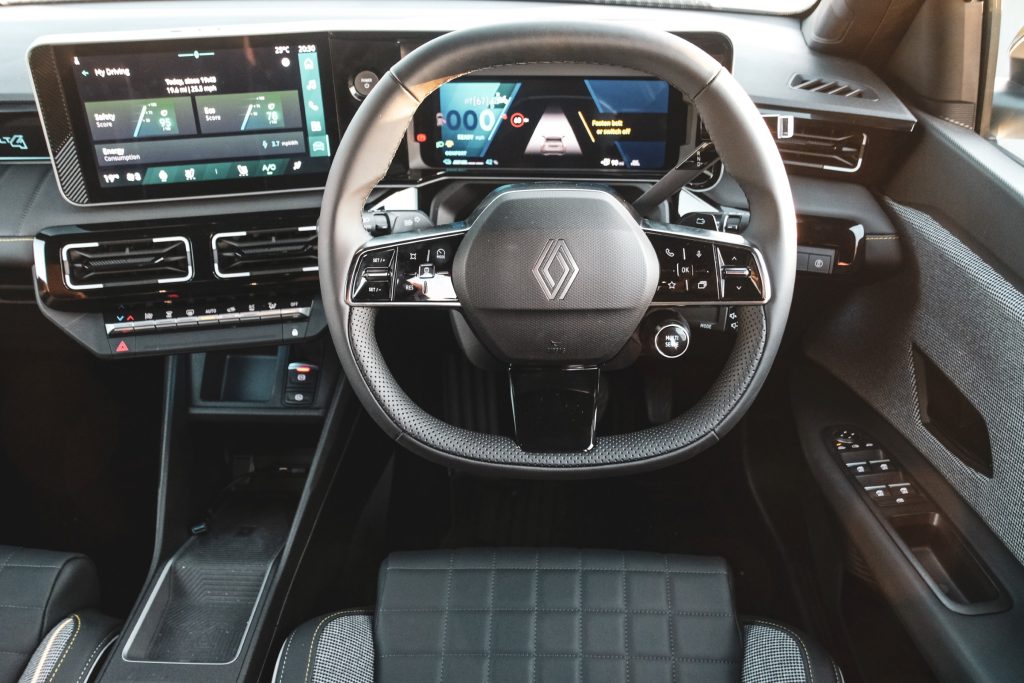
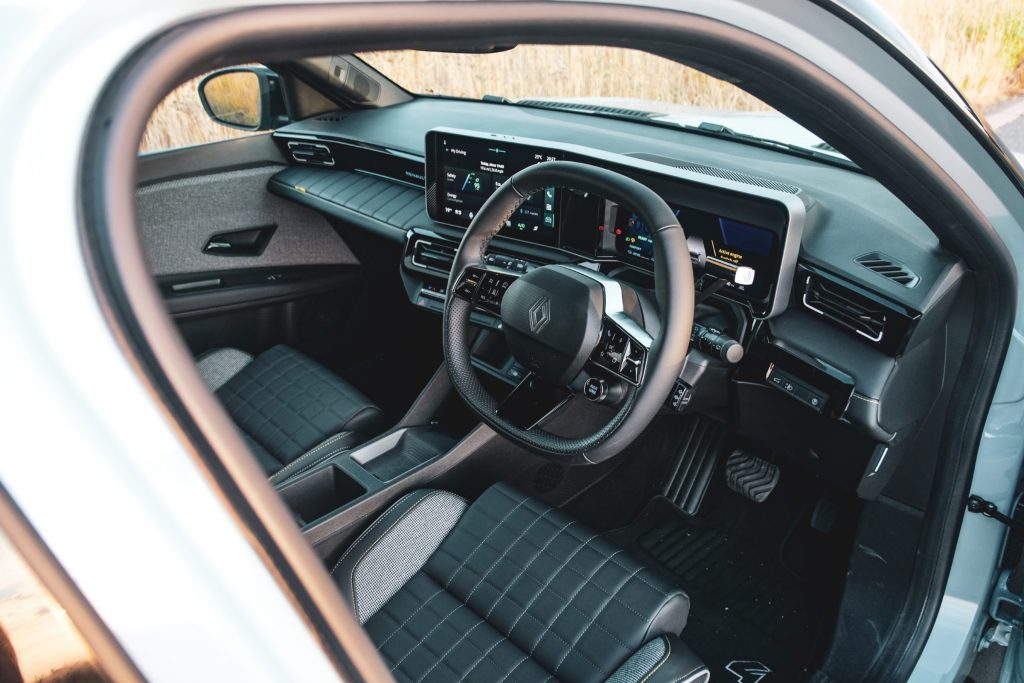
That’s probably the last time you’ll find real fault with how the Renault 4 E-Tech drives though. It is, unsurprisingly, like a slightly more grown-up 5 E-Tech, the extra wheelbase and what feel like marginally softer suspension settings moving the needle slightly further from “Clio Williams” and slightly closer to “Safrane”, if not all the way there. Smaller wheels than the standard-fit 18-inchers might help, but the ride certainly isn’t perturbing.
Some of the 5’s nimbleness has gone too but the 4 still feels lively enough for a B-segment crossover. This isn’t a class known for great driver’s cars to begin with so it’s certainly no worse than most, and the usual EV combo of a low-set battery, relatively even weight distribution, and keen accelerator response (there’s enough pep to spin the wheels out of tight corners) means it’ll entertain some good old-fashioned French hatchback slinging-about, without original Quatrelle-style comical lean angles. The steering’s good too, not fizzing with feedback but light, responsive, and progressive.
Unlike the 5 (at least for the time being), the 4 gets a full one-pedal driving mode, using paddles to adjust the level of braking regeneration. There’s not much to say about these systems other than that it works effectively, slowing you to a complete halt in an intuitive way, which means you rarely end up using the brake pedal if you have decent levels of anticipation. Given the brakes don’t feel quite as firm in the 4 as they do in the 5, not touching the pedal is actually a benefit too.
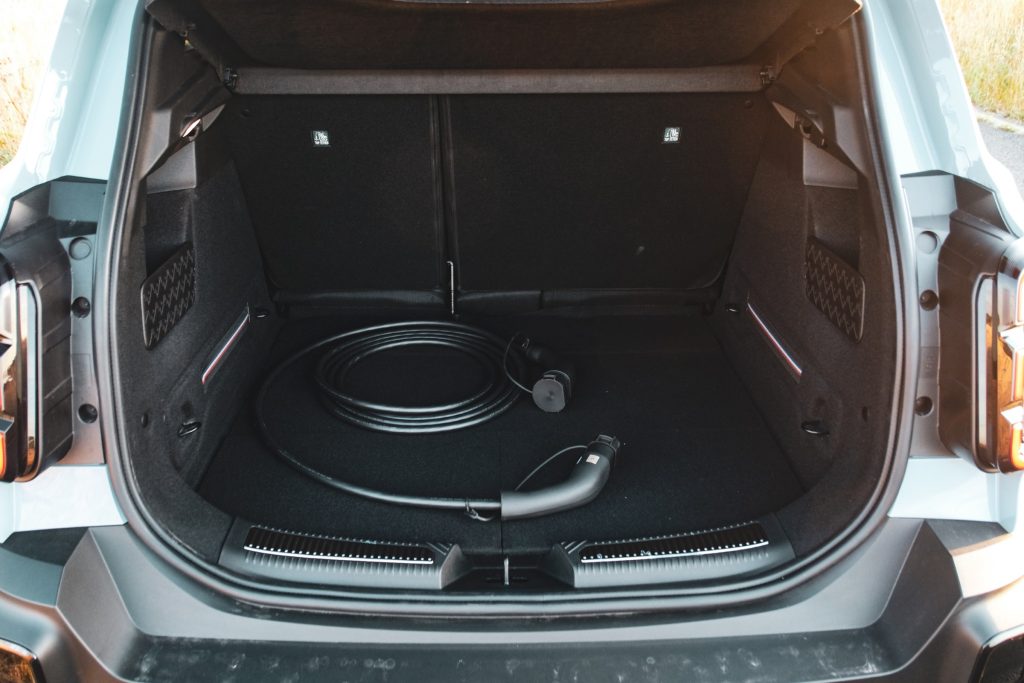
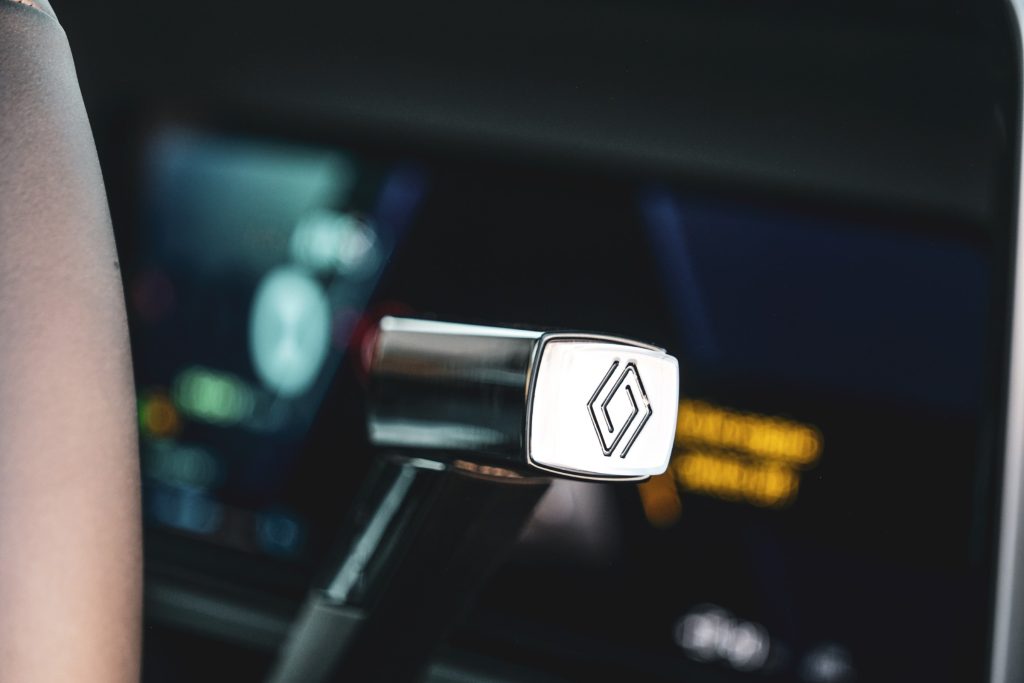
And so to range: In mixed driving, the Renault 4 E-Tech returned around 4.1 miles per kilowatt-hour in our hands, which means that 52kWh battery pack would get you 213 miles if you ran it from full to empty. Keep the thing in the 20-80 per cent window and you’ll probably end up topping up every 130 miles or so.
Conveniently for this example that works out at around 32kWh of electricity, and a similar 28kWh top-up at a public rapid charger took us bang-on 30 minutes (well, 30 minutes and two seconds). That’s not a particularly speedy charging rate – the 4 tops out at 100kW, and we were getting a consistent 60kW or so – but if you don’t regularly cover long distances, then a half-hour stop at a service station for another 130-ish miles of juice isn’t too bad a compromise.
The cost might be, since it stung us for about 25 quid – equivalent to a petrol car doing only 32mpg. As ever, you’re better off charging up at home whenever you can (and if you’re able) to maximise the EV running cost benefits.
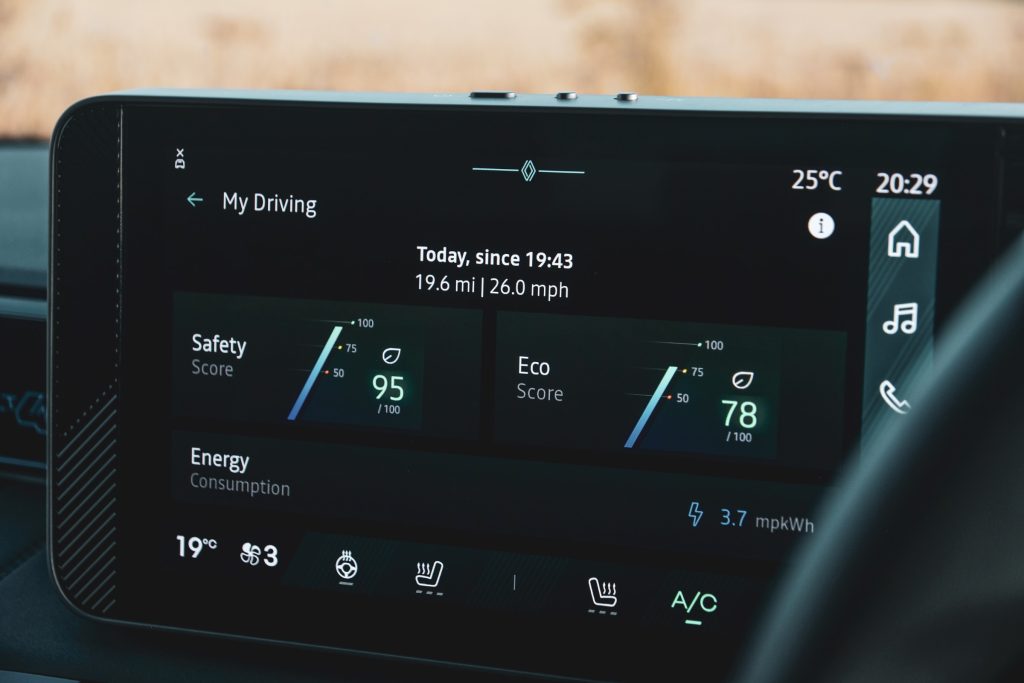
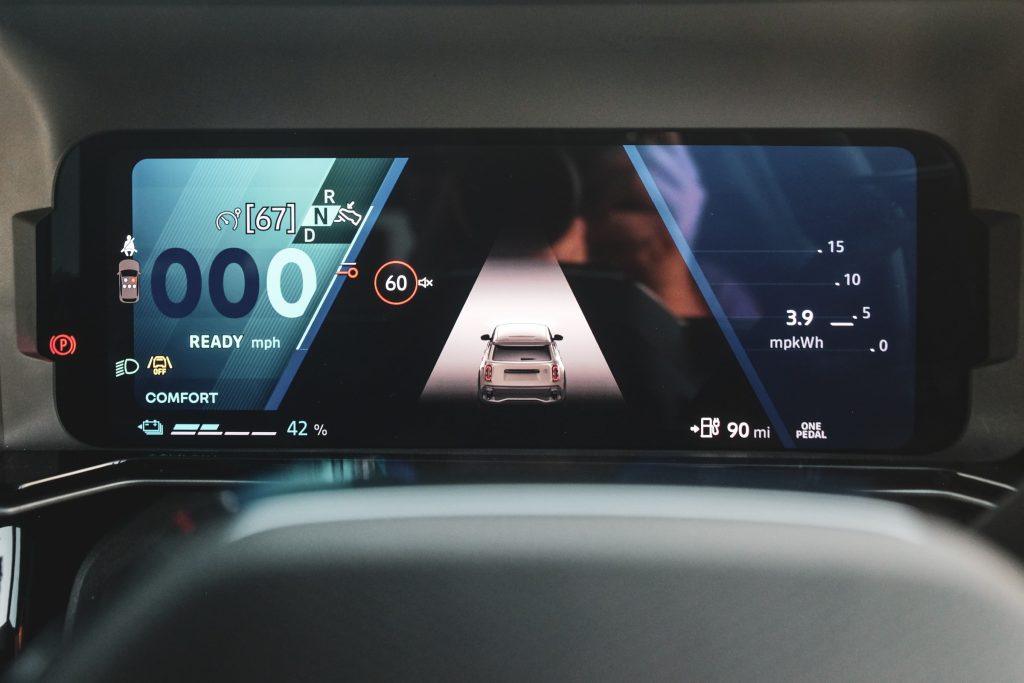
That’s not the Renault 4’s fault anyway. Like the 5, Renault’s latest, slightly larger EV is enormously likeable, both in the way it looks, the way the interior operates, and the easy way it goes about day-to-day driving. While not as eager and fashionable as its smaller counterpart, it’s probably the better car for most drivers, for its extra comfort, space and practicality, for minimal (if any) extra cost. If the Twingo ends up being as good as the R4 and R5, Renault’s rivals will really have to step up their game in the compact EV market.
2025 Renault 4 E-Tech
- Highs: Visual charm, more family-friendly than the 5
- Lows: Missed opportunity for a retro dash design, average charging speed
- Takeaway: Just as good as the smaller Renault 5, but more spacious and sensible
Specs: Renault 4 E-Tech
- Price: £26,995 (Evolution), £30,995 (Iconic tested)
- Powertrain: 110kW electric motor, single-speed transmission
- Horsepower: 148bhp
- Torque: 181lb ft
- Layout: Front-wheel drive, five-door hatchback
- Weight: 1462kg
- WLTP driving range: 247 miles
- Competition: Ford Puma Gen-E, Jeep Avenger, Alfa Romeo Junior Elettrica
Keep your classic on the road
At Hagerty, our mission is simple: to help you protect the car you love. Discover trusted classic car insurance from the people who get it.










What a huge difference there’s between the quoted and actual range, don’t know if it’s the same for all battery powered cars.
Buyers beware!